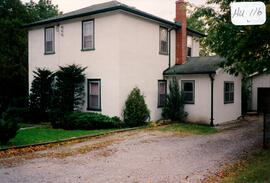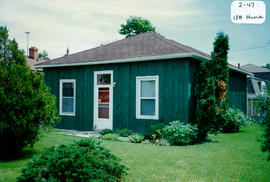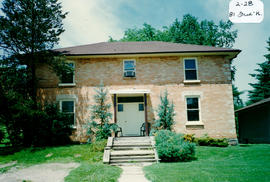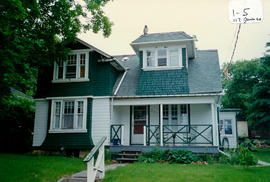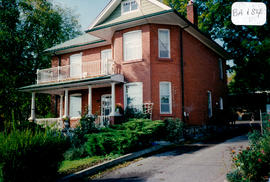- CA BWGPL GJ-HB-2017-03-22-14
- Pièce
- 1995
Fait partie de George Jackson fonds
The house located mid-block at 116 Hurd St. was built pre-1890 in the Ontario Vernacular style. It was once the home of carpenter Arthur Moseley.
The two-storey, rectangular building has simple detailing. There is a centre hall, a single-storey rear addition and a medium-pitched, hip roof. It has medium-sized window openings. The 2/2 wood, sash windows have plain, wood lug sills and trim. Aluminum, storm windows and a door are more recent additions. Stucco covers the wood frame construction and there is a parged, stone foundation. The structure was probably clad in wood cove siding originally. According to the 2000 inventory, this house once had a verandah and a bay window on the left side. It also notes a lack of decoration or porch addition. (1, 3)
Sans titre

